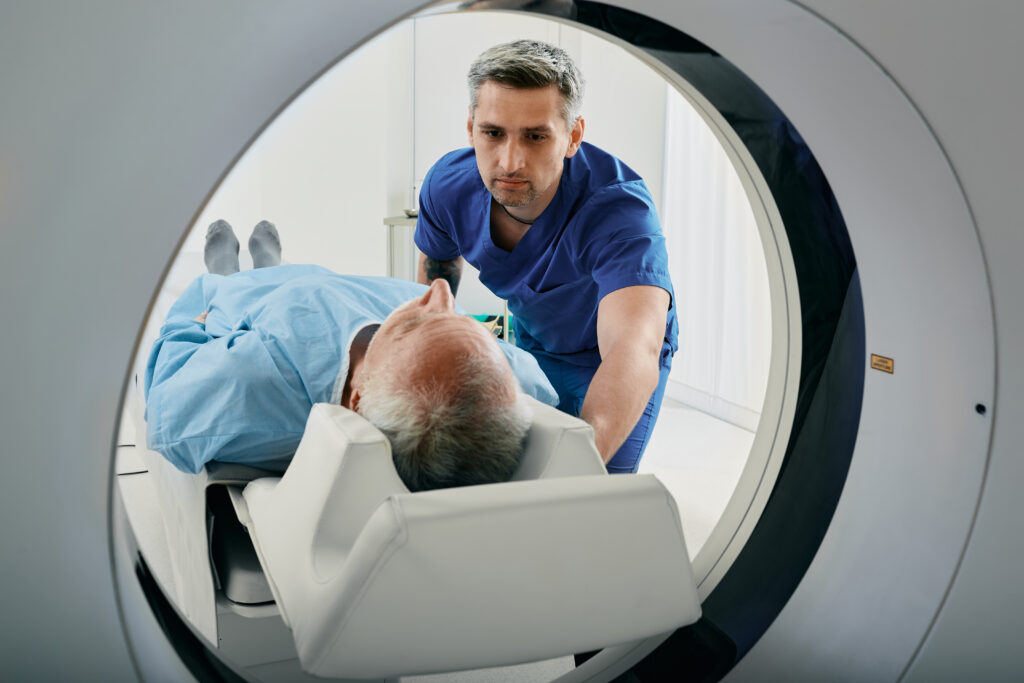
3T MRI for prostate
If you’re over 50 it’s important to check your prostate. At Prime Health we've developed a fast, accurate and ...

Prostate cancer is the most common cancer among men, but early detection can be a game changer. When identified in its early stages, the disease outlook is much brighter with a range of treatment options that can significantly improve outcomes and deliver better quality of life.
Early detection increases the chances of successful treatment. Smaller, localised cancers have a higher cure rate and respond better to less invasive therapies like surgery or radiation, preserving vital functions and reducing side effects. This means less burden on your body and potentially faster recovery.
Early diagnosis also opens doors to a broader range of treatment options with a more personalised approach, tailoring treatment to the specific characteristics of your cancer for optimal results.
Early awareness empowers you with valuable information and time. You gain control over your situation, enabling informed decision-making supported by your doctor. The anxiety and uncertainty associated with cancer are significantly reduced when identified early. This can translate into improved mental well-being, resilience, and a positive outlook on your life journey and the way you can live it.
MRI stands for Magnetic Resonance Imaging, a medical imaging technique that uses a powerful magnetic field and radio waves to generate detailed pictures of the inside of the body.
In the context of prostate health, a prostate MRI is a specialised imaging technique used to examine the prostate gland, which is a part of the male reproductive system.
Men should consider bi-parametric prostate MRI as a significant development in the diagnostic challenge that is prostate cancer.
During the MRI, T2-weighted imaging acts as a highly detailed mapmaker. It generates detailed anatomical images of your prostate, revealing its contours, internal features, and any suspicious lumps or bumps with remarkable clarity.
The diffusion-weighted imaging (DWI) is the tissue analyser. This specialised technique tracks the movement of water molecules within your prostate tissue. Healthy cells have a well-organised water flow, while cancerous cells disrupt this flow, creating a tell tale “traffic jam” that DWI picks up. It’s like having a microscope that identifies potential troublemakers hiding within your prostate.
By combining these two approaches, bi-parametric MRI provides a comprehensive picture of your prostate health. T2-weighted imaging pinpoints suspicious areas, while DWI assesses their potential malignancy, helping you and your doctor make informed decisions about further investigations or interventions. Think of it as having a two pronged attack to allow the radiologist (imaging specialist) to confidently interpret any diease within the prostate gland.
Investing in bi-parametric MRI as part of your proactive health strategy can offer invaluable peace of mind. As with anything in life, knowledge is power, and the most detailed information can make all the difference when it comes to your health.
Where early detection is paramount for effective management and improved outcomes, Bi-parametric Prostate MRI has emerged through an increasing body of research as a crucial non-invasive diagnostic tool. This advanced imaging technique enables accurate identification of potentially cancerous or suspicious areas within the prostate, serving as a critical step in guiding subsequent clinical decisions and optimising treatment strategies.
By leveraging the combined insights of two distinct sequences, Bi-parametric MRI empowers clinicians with a comprehensive picture of the prostate’s health, ultimately contributing to enhanced patient care and potentially altering the course of prostate cancer management.
Urologists and radiologists use the information from the bi-parametric Prostate MRI to determine the need for further investigations, such as targeted biopsies.
The roles of PSA (Prostate-Specific Antigen) and bi-parametric Prostate MRI in the early diagnosis of prostate cancer in simpler terms:
PSA is a protein produced by the prostate gland, and it’s normal for a small amount to be present in the blood.
The PSA blood test measures the level of this protein. Elevated PSA levels can be a sign of various prostate issues, including prostate cancer.
High PSA levels can indicate a potential problem with the prostate, but it doesn’t precisely pinpoint cancer.
PSA testing is often used as an initial screening tool. If PSA levels are elevated, it may prompt further investigation to determine the cause.
Prostate cancer can occur in the setting of normal PSA and there is increasing evidence that bi-parametric MRI may be of greater value if more re-assurance is required/needed.
PSA and Bi-parametric Prostate MRI are often used together for a more comprehensive approach to prostate cancer detection.
Elevated PSA levels may prompt a doctor to recommend a multi-parametric Prostate MRI to get a clearer picture of the prostate and identify potential cancerous areas.
If the PSA result is normal but further re-assurance requiredbi-parametric MRI can be very helpful.
PSA Testing: It’s usually the first step. Elevated PSA levels may lead to further investigation.
Bi-parametric Prostate MRI: If PSA levels are elevated or if there are other concerns, a doctor may recommend a prostate MRI to get more detailed information.
In summary, PSA is a blood test that provides an initial indication of potential prostate issues. At the same time, bi-parametric Prostate MRI is an imaging technique that offers detailed pictures of the prostate, helping to identify suspicious areas.
Together, they form a complementary approach for the early diagnosis of prostate cancer, allowing for a more informed decision on further diagnostic steps.
We’ve developed a streamlined, fast-track pathway which utilises our years of experience and expertise in accurately and effectively assessing prostate symptoms.
Don’t wait for a prostate assessment. Wait less, worry less.
